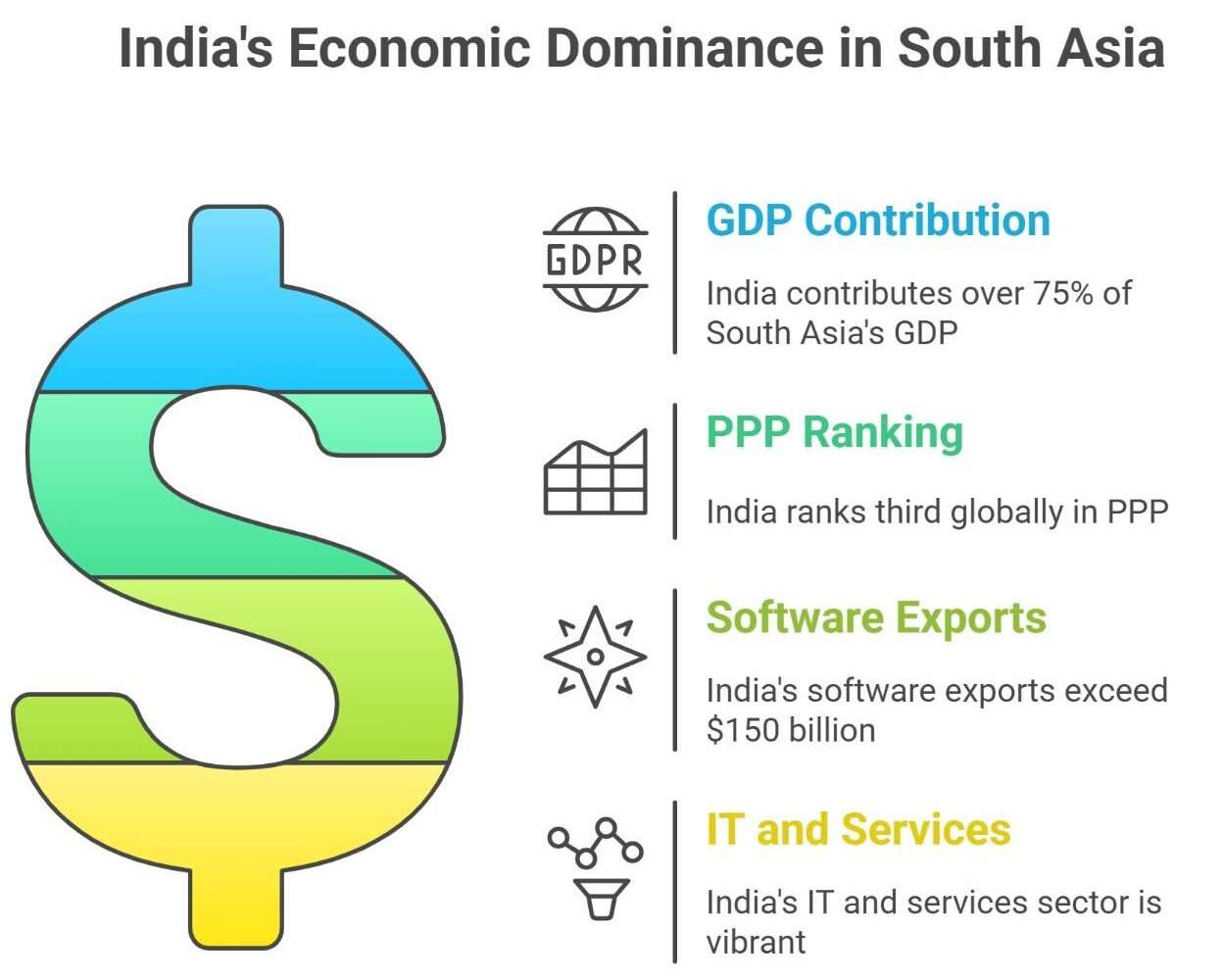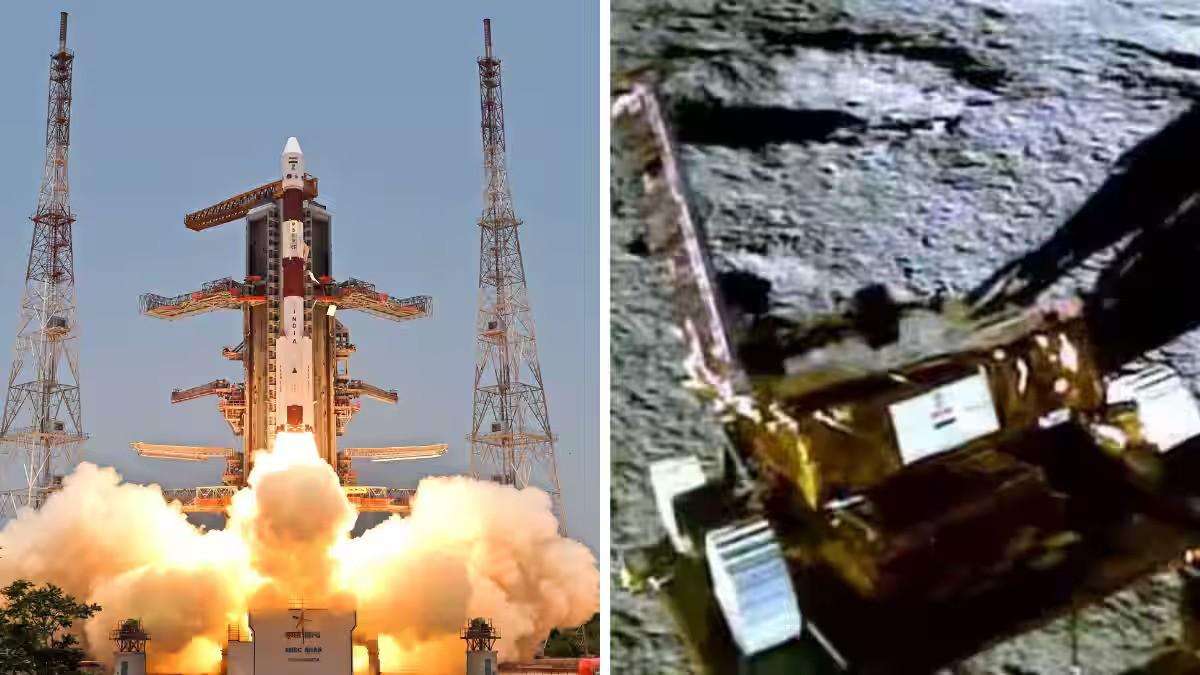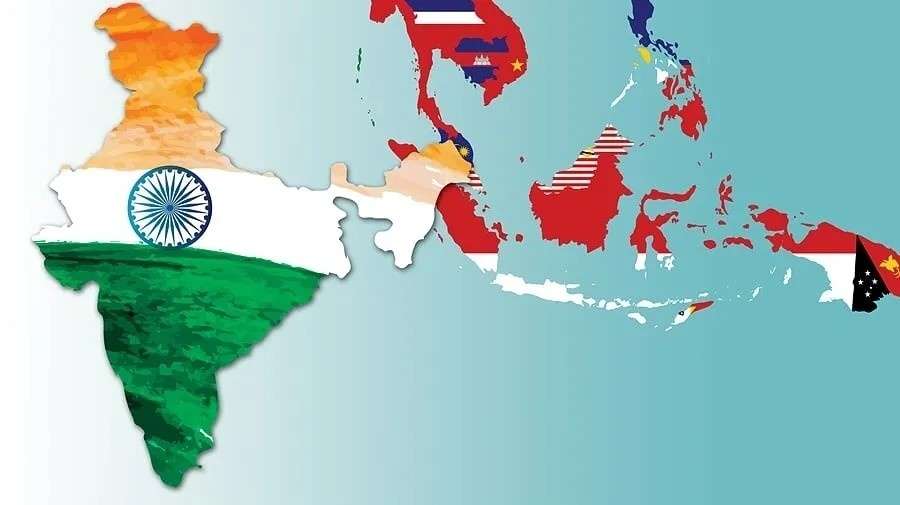India’s potential predominance within South Asia has ceased to function as an assumption within the realm of geopolitics and instead has morphed into an established reality and certainty brought to the fore through data. Through the realms of economic power, military capability, demographic weight, and technological ambition, India outpaces the entirety of South Asia across different measurable yardsticks. We will turn to an analysis of the different principal indicators supporting India’s unmatched position, the implications at a regional level, and how these changes are structuring the future of an entire subcontinent.
India’s Economic Engine: The Backbone of South Asia
In terms of India’s GDP, the numbers are staggering. By 2024 India’s GDP is at $3.7 trillion (nominal) and is the largest economy in South Asia, by a massive margin. India contributes more than 75% of all South Asia’s GDP, and Pakistan and Bangladesh together contribute only a shade near to 25%. In Purchasing Power Parity (PPP), India is third in the world behind the US and China. With software exports of more than $150 billion in 2024, and continuing vibrant activity in IT, BPO, and other services, India is the economic center of the region without a doubt.

India’s economic rise is not disconnected. It is intrinsically connected to the region’s economic growth. India’s trade and connectivity initiatives (Sri Lanka ports investments, Nepal’s highways, Bhutan’s hydropower, etc.), along with proximity and goodwill towards its neighbours, positions India as the region’s economic anchor.
Demographic Dominance: India as the Regional Giant
India is the world’s most populous country, with 1.43 billion people. India has a population that reflects about three quarters of the population of South Asia, which gives India a particular demographic strength. Demographic strength, of course, can be a blessing and a curse. On the plus side, India enjoys an enormous labour force, a large consumer market, and some significant soft power based on its diaspora. On the negative side, for many people in India, there are challenges like youth unemployment, and there are also gender discrepancies in participation. However, about being influential, sheer numbers give India a huge advantage. No matter if it’s culture, commerce, or regional negotiations, India can play off its size as leverage. No other South Asian country can compete with India’s population size in this way.
Military Superiority: India’s Strategic Might
In the realm of defence, India is the dominant military power in South Asia. In the 2024 Global Firepower ranking, India is ranked 4th overall, and has a military budget surpassing $79 billion, over six times the size of Pakistan’s military budget.
India maintains a powerful tri-service force:
- Army: India’s mobilized land-based force is unquantifiable; it has over 4,600 tanks.
- Navy: India’s maritime force is the largest in the region and has two aircraft carriers and fleet of nuclear submarines.
- Air Force: India has advanced aircrafts including Rafales and Su-30MKIs.
India’s military is a nuclear power and would likely have credible deterrence because of its Agni and Prithvi missile systems. India is also focused on indigenous defence production such as BrahMos missiles, HAL Tejas jets, amongst others. This will allow India strategic autonomy.

Geopolitical Influence: Diplomacy Backed by Strategy
India’s claim to regional dominance is more than power, it is smart diplomacy. As one of the staunch founding partners of SAARC, a major player in BIMSTEC, and a divinely strong member of BRICS, G20, and the SCO, India has a top ten position on both the regional and the global stage. By providing financial assistance and development assistance to countries like Sri Lanka, Bangladesh, and Nepal, India is doing its best to be the first call for South Asian development partners in comparison to China’s Belt and Road projects. But there is still competition, as China is expanding its footprint in the Indian Ocean and will forever be a strong ally of Pakistan, and this creates a difficult chessboard. But India uses its own smarts by investing in the International Solar Alliance project and QUAD diplomacy again enabling and ensuring India and where it can fully be a supportive ally to its friends, while it maintains a footprint of influence.
Space and Tech: India’s Ascent Beyond Earth
India’s ascent isn’t limited to Earth. The Indian Space Research Organisation (ISRO) has been making the news with missions like Chandrayaan-3 and Aditya-L1. While ISRO launches successful missions, India has begun a rise to the front of the space tech line in Asia along with China and Japan. The private space industry in India is coming alive. It officially has about 190 startups and is projected to grow to $44 billion by 2033. India is all set for higher tech. The software industry, one of India’s prized jewels, continues to export digital services from India globally and helps advance GDP growth.

Conclusion: India – The Unquestioned Leader of South Asia
Whether measured by economic power, military strength, population size, or space capability, India is the uncontested leader in South Asia. The dual ability to use hard power along with soft power and diplomacy with infrastructure, whether in exports or trade agreements, has placed India in a position to serve as the central node around which South Asia spins. And as India continues to climb, it must be able to manage its own internal contradictions, inequality, employment, regional disparity, etc. Being the dominant power comes with responsibility. India will be judged not merely by how much power it can project, but by how much it is able to elevate the wellbeing of its neighbours.
Frequently Asked Questions (FAQs)
What makes India the dominant power in South Asia?
India leads in GDP, population, military capability, and space technology, giving it unmatched regional influence.
How does India support its neighbors?
Through trade, infrastructure projects, development aid, and diplomatic engagement across SAARC, BIMSTEC, and G20 platforms.
Is India competing with China in South Asia?
Yes, while India leads regionally, China’s presence in Pakistan and the Indian Ocean keeps the strategic balance competitive.

